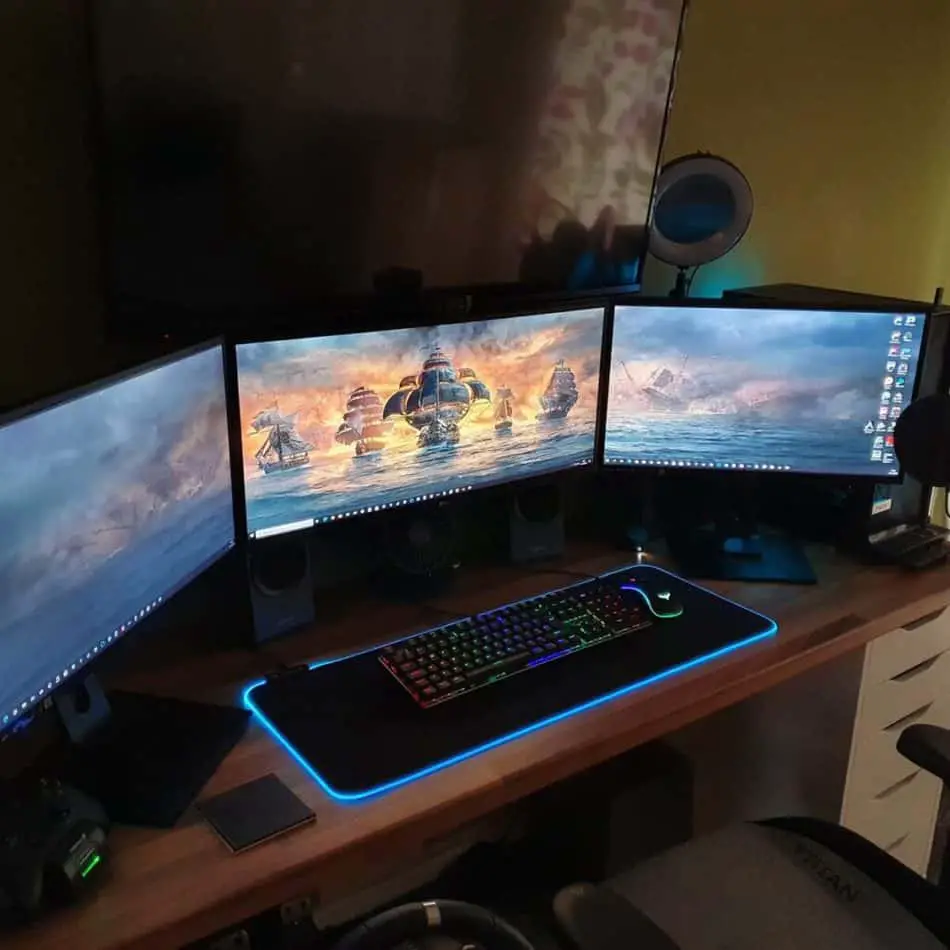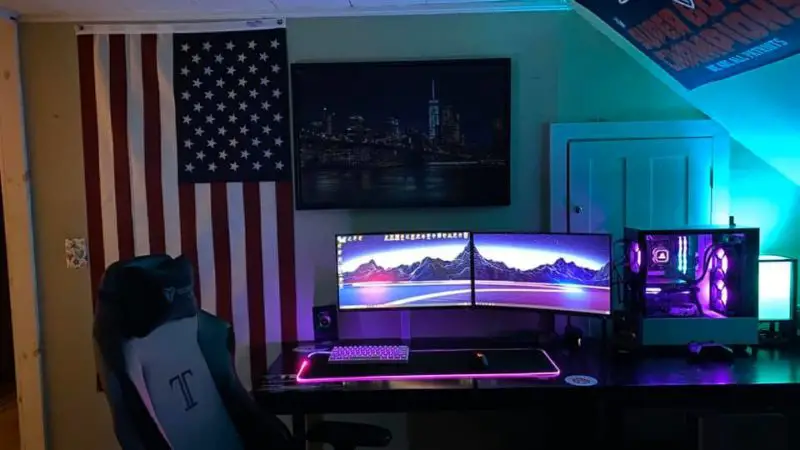Introduction
Several gaming appliances use different levels of voltage.
It’s important to know this because gaming PCs, monitors, and speakers still use power when they’re turned off. You might also be someone who primarily wants to reduce power use in your home.
The good news is there are several power-saving monitors which don’t yield a lot of wattages (amps/volts) when in use and when turned off.
So how many volts does a computer monitor use?
Computer monitors use an average of 100-150 watts (less than 1 amp and 1.2 volts) while in use after testing them on a digital multimeter. We surveyed several high, medium and eco-friendly power monitors and found that the actual wattage used is lower than the manufacturer’s box specifications.
This article will not only provide you with exact numbers of wattage/volt used for each monitor, but also some recommended products I tested when I was helping my friend with an eco-friendly setup.
Before using this number and jumping to conclusions, check out the following details regarding the depth of this number and how you can apply this to your setup.
1. Only 3 Things Affect Computer Monitor Power Consumption

The three elements are brightness, duration of use, and volume.
Sounds obvious right? So why did I put this in here? These three elements will cause even eco-friendly monitors to use as many volts as a regular monitor unless you unplug it after use.
If you have a standard house setup and aren’t worried about electrical bills, you can skip to the next section.
Is 100-150 watts a lot for a computer monitor?
Computer monitor wattage under 150 is not a lot compared to other home appliances. Research on the most common household appliances reveals they are on the lowest end of voltage used. See the table below.
| Appliance | Wattage Use |
| Dryer | 2000-3000W ( majorenergy.com) |
| Ceiling fan | 17-90W (blogconstellation.com) |
| Lightbulb | 7-10 (handyman.com) |
| Gaming PC | 300-500W (computerinfobits.com) |
| Gaming monitor | 100-150W (entertainmentden test) |
Gaming monitors with a variety of refresh rates (60hz, 144hz, and 244hz) were tested and they were all the same.
For broke college students or those who have old outlets that use too much power, then this is important to know.
2. Length of use increases wattage over time

The longer your use your monitor, the more power you will use. Older computer monitors will use disproportionately more power if they’re brightness is turned all the way up (see case study in this article).
Which Computer Monitors Use Lowest Voltage?
You can get eco-mode on a lot of computer monitors but that doesn’t actually reduce power consumption but Samsumg and Asus brands proved to be the most power-efficient. Rather, some companies make more power-friendly monitors than others. The table below helps identify which monitor brand creates products that use the most and least wattage during use.
| Brand | Average watt / voltage use |
| MSI | 60 watts (displayspecifications.com) |
| Asus | 47 (anandtecch.com) |
| Samsung | 40 (insights.samsung) |
Brightness: The brighter the screen, the more power is use. If a monitor is at the end of its life and brightness is turned up even though it looks dim, it’s still using max power.
3. Monitors with built-in speakers use more voltage

Built-in speakers use a lot of wattage suprisinglly. The quality of computer monitor speakers is far less than that of a dedicated desktop set (and you pay more for built in speakers).
Important note: There are a few important computer monitor aspects such as refresh rate, size, and cost that don’t affect wattage/volts use. Check out the next section for an in-depth look.
4. Wattage use isn’t affected by refresh rate
I was surprised when I discovered this after researching several gaming monitors.
It doesn’t matter what activity you do on your computer monitor, power consumption will always be the same. This includes playing videogames, watching 4k Netflix, or editing digital media.
If you google almost any computer or gaming monitor, you’ll notice they all come with the same AC-style adapter and power cord. These power cords are capable of up to 200 watts of power input.
The various sizes of computer monitors have negligible effects on voltage use too.
Important note: Curved monitors do use more power (about 50 watts more) than normal monitors. Ultra-wide displays have different power allocations because of their design.
Resolution displays also don’t matter in determining a computer monitor’s voltage use.
5. Wattage isn’t affected by monitor size
If you do any research, you’ll find monitor power comsumpton isn’t related to the screen size. Most monitors are 24-32inches, While there is a dramatic difference in the price of a small or large monitor, the wattage stays the same almost across the board (or has a negligible difference).
Final Thoughts
Computer monitor voltage isn’t that significant compared to other household appliances. This article was meant to have you realize that and that power use shouldn’t be something you’re worried about for your computer monitor.
If you want some insider pro tips on gaming gear and gaming setups, enter your email in the sidebar for a free e-book emailed to you immediately!
Thanks for reading! As always, if you have any other questions or comments, feel free to reach out at entertainmentden.ns@gmail.com and I’ll do my best to respond! Stay tuned for the next article!

